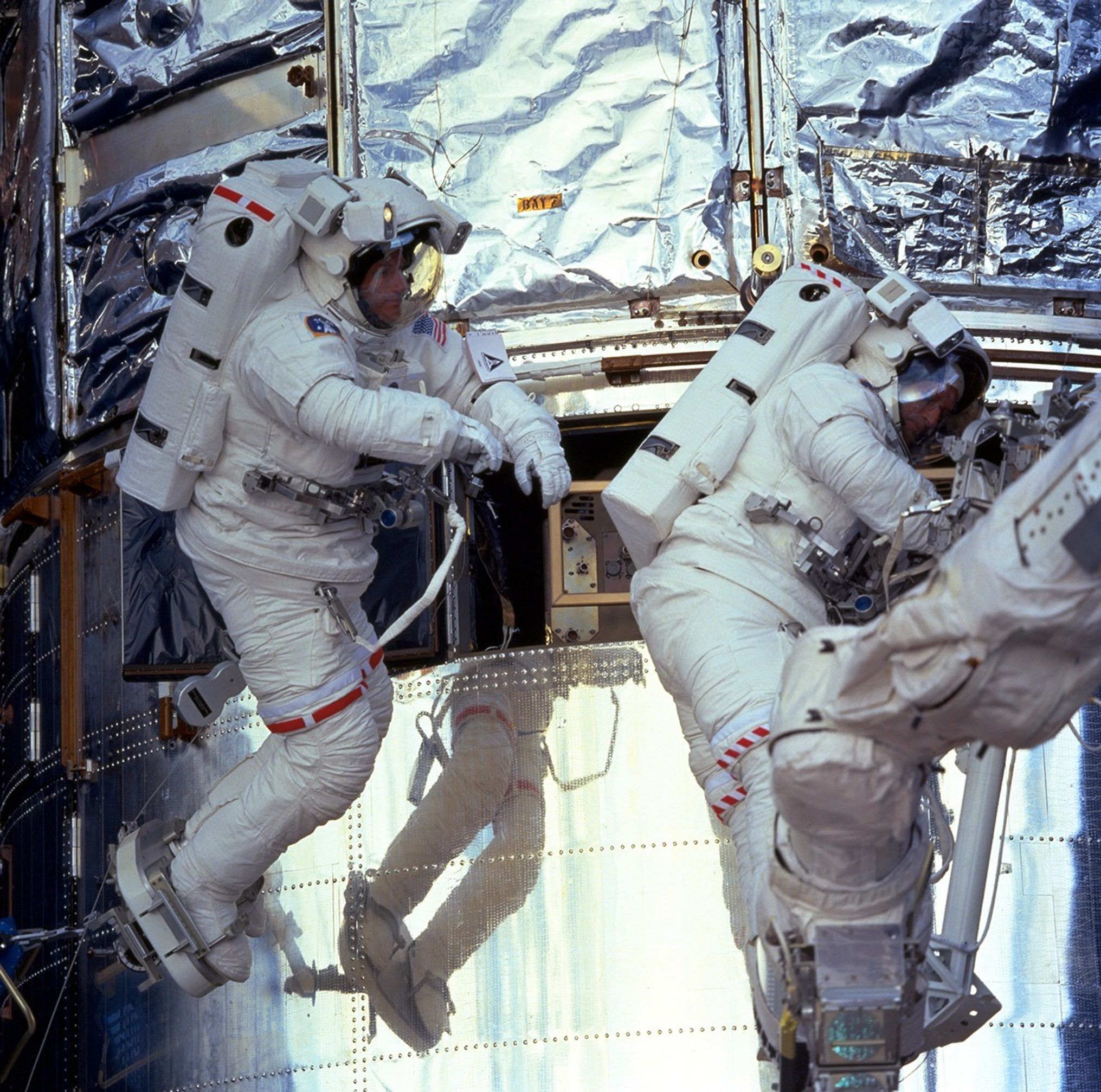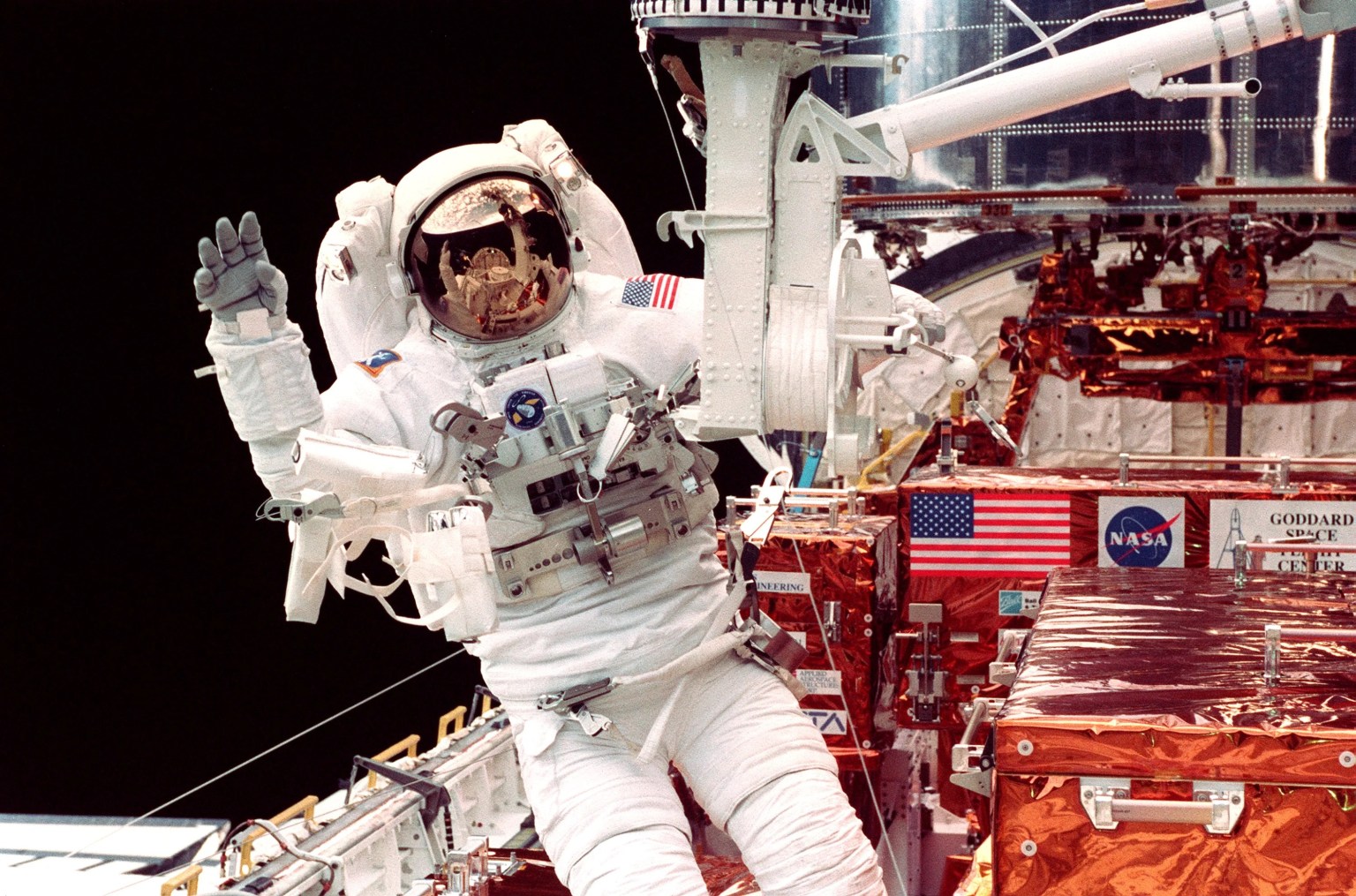On Dec. 19, 1999, the space shuttle Discovery launched on an urgent mission to the Hubble Space Telescope, approximately five months ahead of the original schedule. What had been a routine mission abruptly became critical when a fourth of Hubble’s six gyroscopes failed, leaving the telescope locked in a dormant state known as “safe mode.”
Follow Hubble's social media platforms as we celebrate Servicing Mission 3A's 25th anniversary.
Celebrating Servicing Mission 3A

Servicing Mission 3A (SM3A)
NASA has a call to action when four of Hubble’s six gyros failed.

Servicing Mission 3A Video
NASA decided to split the Third Servicing Mission (SM3) into two parts, SM3A and SM3B, after the third of Hubble's six gyroscopes failed.

Servicing Mission 3A
Flickr Gallery
Images from Hubble’s third servicing mission, STS-103 (December 1999)

Hubble Astronauts
Learn more about the astronauts who have visited and upgraded Hubble while in orbit.
Hubble’s gyroscopes are essential parts of its pointing system, but because of their relatively delicate nature they were routinely replaced during servicing missions. Astronomers and engineers had watched with increasing concern as the telescope lost gyroscopes in 1997, 1998 and 1999, between the second and third servicing missions. At the time, three gyroscopes were needed to point the telescope, and three were kept as backups.
Hoping to avoid a telescope shut-down, NASA split the third servicing mission into two parts in order to move the gyroscope replacement up in its schedule. The foresight paid off when a fourth gyroscope ceased operating in November 1999, forcing Hubble into safe mode. While the telescope was in no danger, science was impossible until the gyroscopes (or “gyros”) were replaced. Since Hubble is always fully scheduled with more scientists competing for time on the telescope than there is time to use the telescope, invaluable data was being lost during the wait ― creating a “science emergency,” as Edward J. Weiler, NASA's then-associate administrator for science, called it. But because SM3A was so close to launch, only a month went by with Hubble in safe mode.
The first part of the third servicing mission, Servicing Mission 3A (STS-103), launched with the goal of replacing the telescope’s six gyroscopes; swapping Hubble’s computer with one 20 times faster; replacing a Fine Guidance Sensor, an instrument that helps point the telescope and conducts astrometry; switching the telescope’s old reel-to-reel recorder with a solid-state device; and installing a new transmitter, which beams science data to a communications satellite, which then relays it to Earth. (The second part of the mission, Servicing Mission 3B (STS-109), would take place in March 2002 and include a new and more powerful camera, the Advanced Camera for Surveys.)
Complicating matters, the mission had to be completed before the New Year due to the Y2K bug that threatened software worldwide in 1999. NASA wanted the shuttles on the ground and powered down as the year changed. Despite some technical delays, the mission was able to launch as the year’s end closed in. Astronauts Curtis Brown, Jean-Francois Clervoy, C. Michael Foale, John Grunsfeld, Scott Kelly, Claude Nicollier, and Steven L. Smith headed into space with a cargo of replacement parts and a tight deadline.
Meet the Hubble SM3A Astronauts
Over the course of eight days and three spacewalks, the astronauts brought Hubble back to life. The components they installed would have a lasting effect on the telescope. For instance, the improved computer, which could hold a day’s worth of commands at a time, enabled the automation of many tasks that had previously required 24-hour care, and allowed the telescope to better monitor itself for problems.
The mission also set in motion a new quest for Hubble engineers: Find a way to prolong Hubble’s operations despite the inevitable deterioration of the gyroscopes. Engineers created a “two-gyro mode” that could point Hubble with only two gyroscopes, which was proactively put to use when Servicing Mission 4 was delayed, and eventually a “one-gyro mode,” which began being used in June 2024 to extend Hubble’s life after more than three decades in space. The legacy of SM3A lives on in the continued success of the Hubble Space Telescope as it approaches its 35th year in orbit.
Space Shuttle History
STS-103
Hubble Space Telescope Servicing Mission (SM3A)
Explore details of the shuttle's mission.
Learn More about STS-103






































